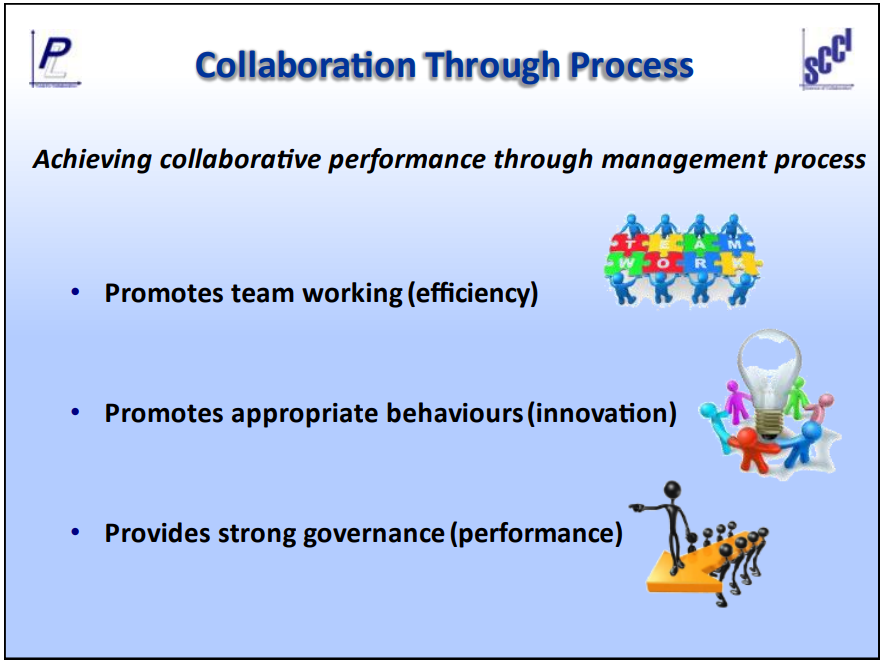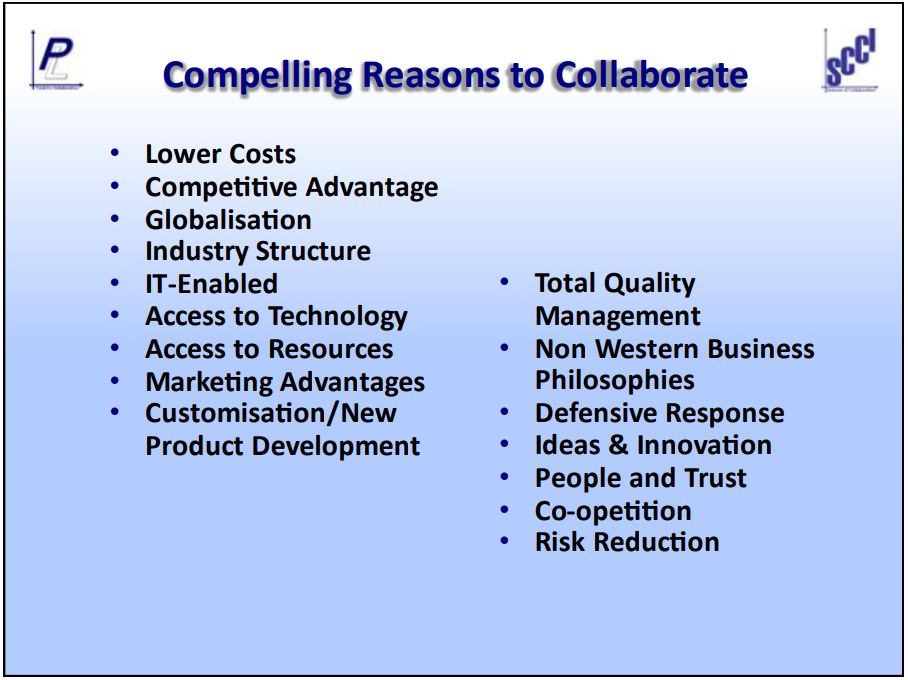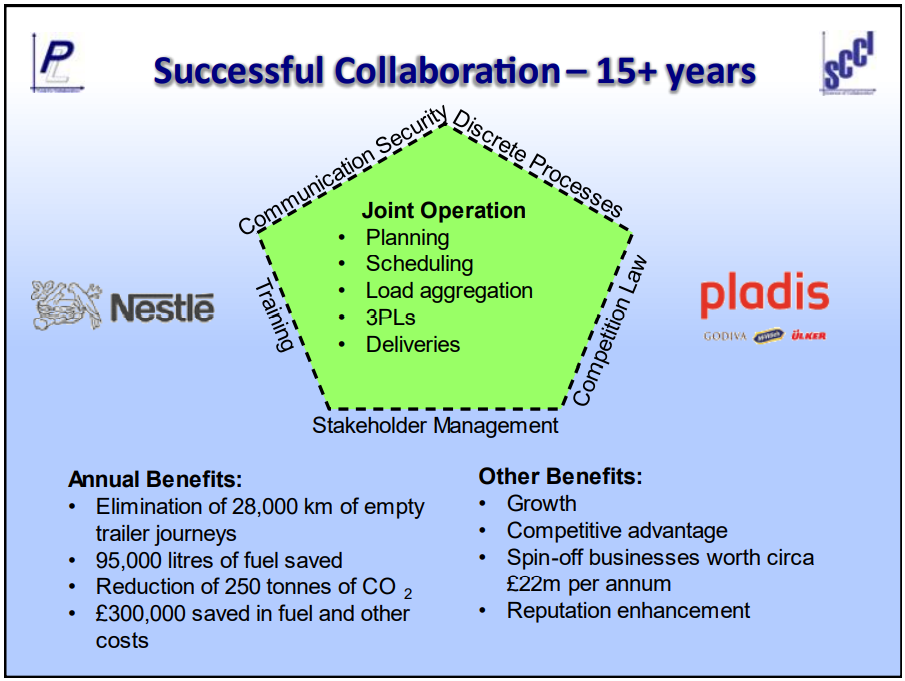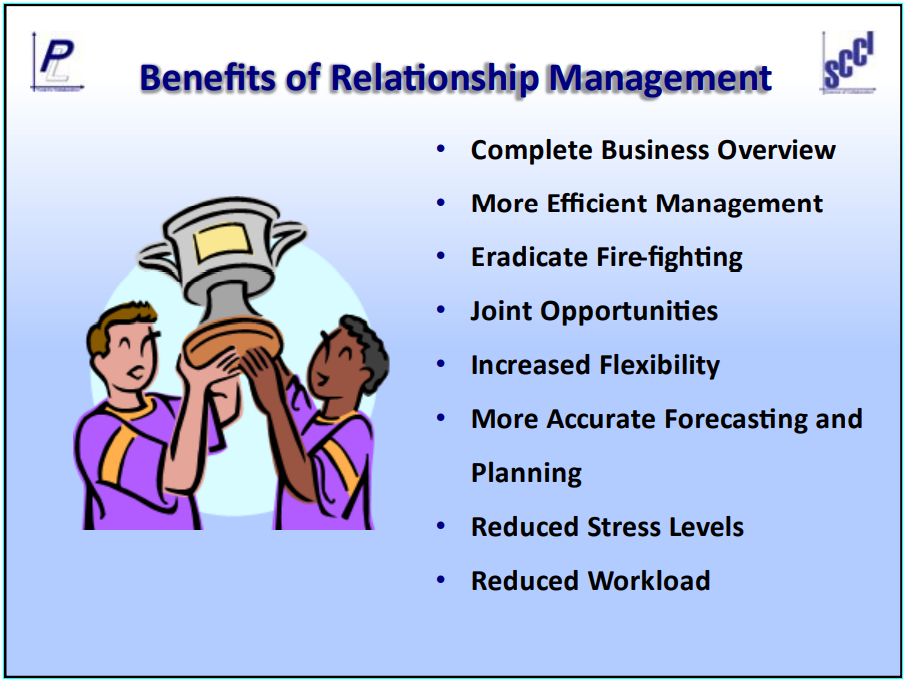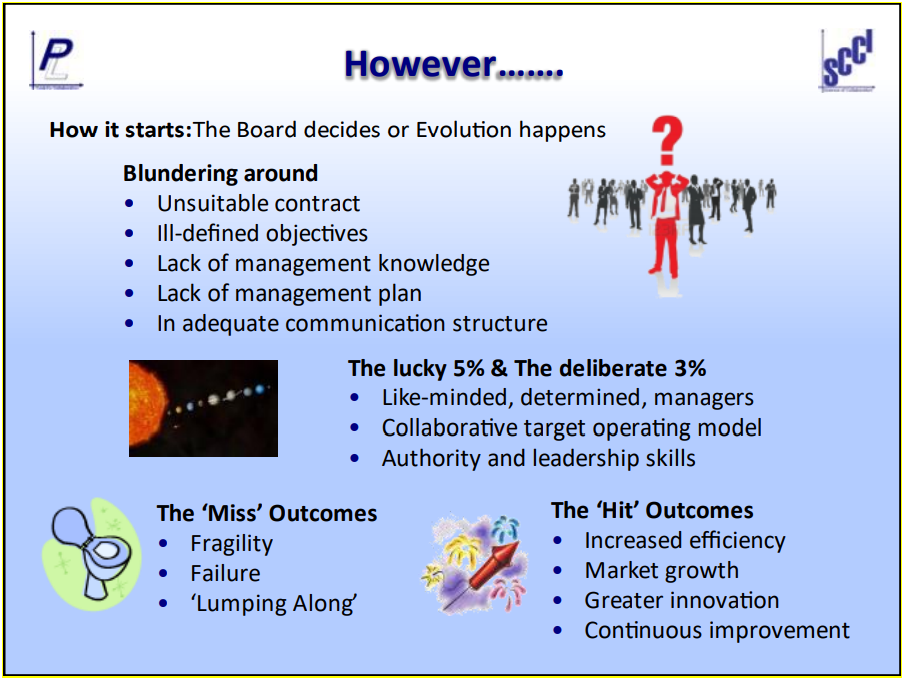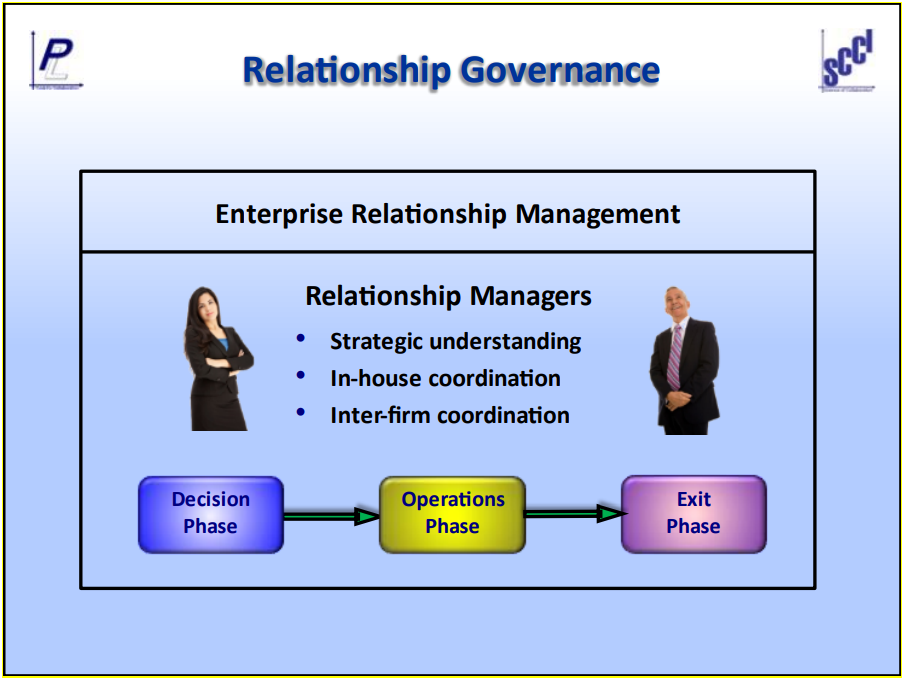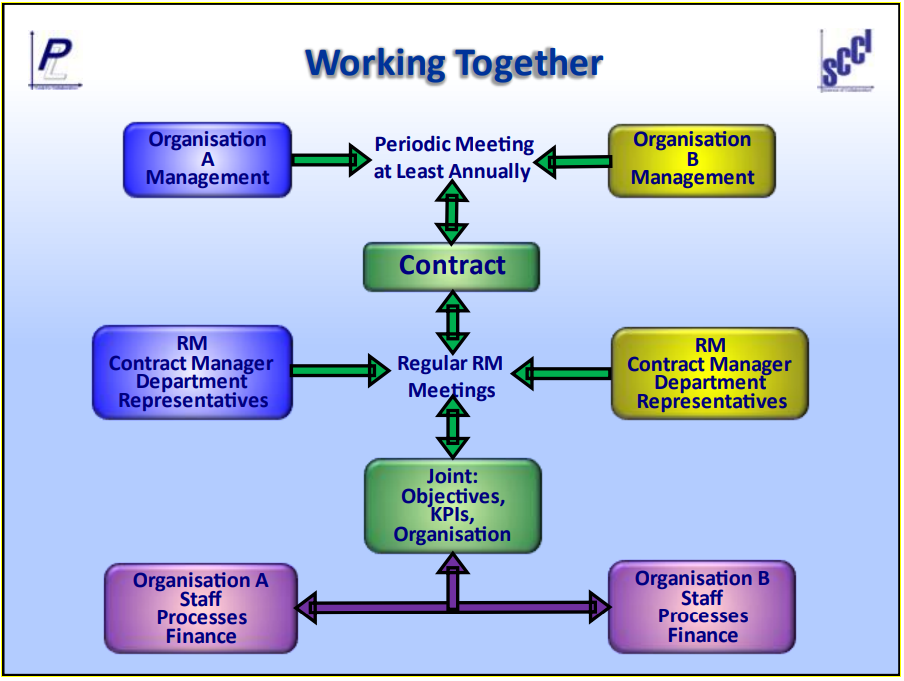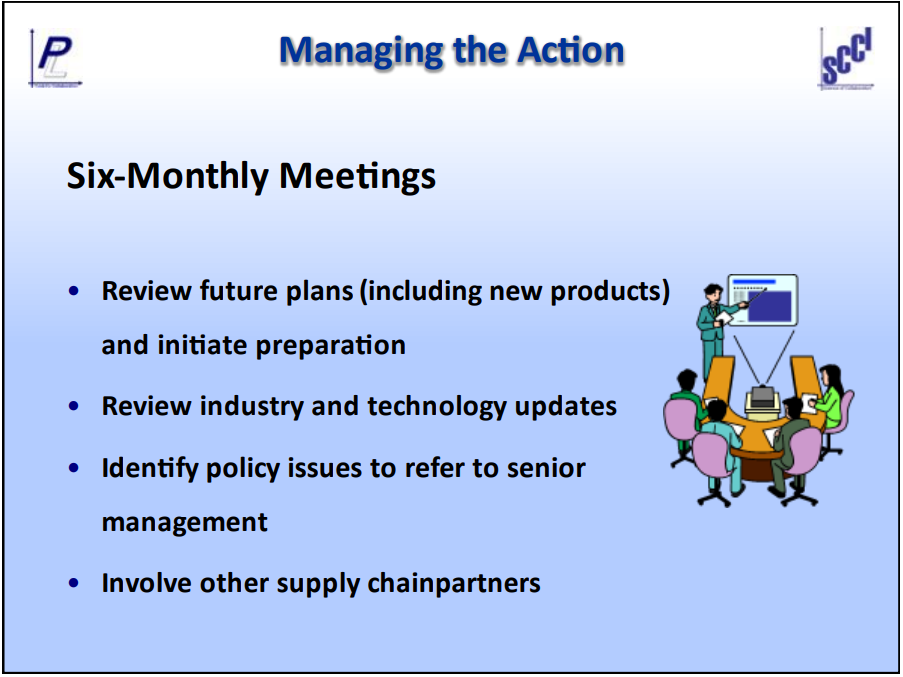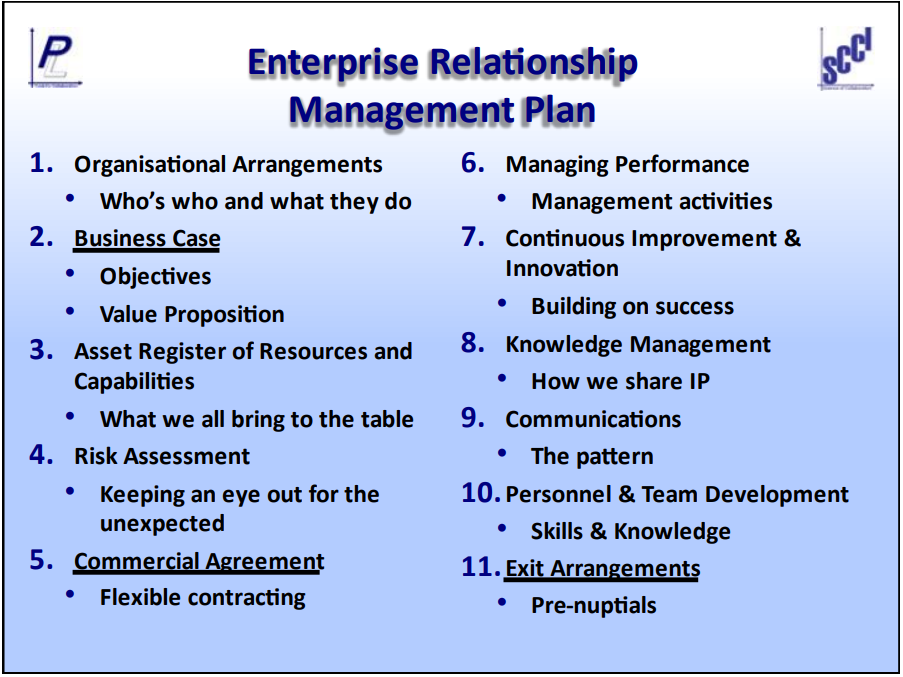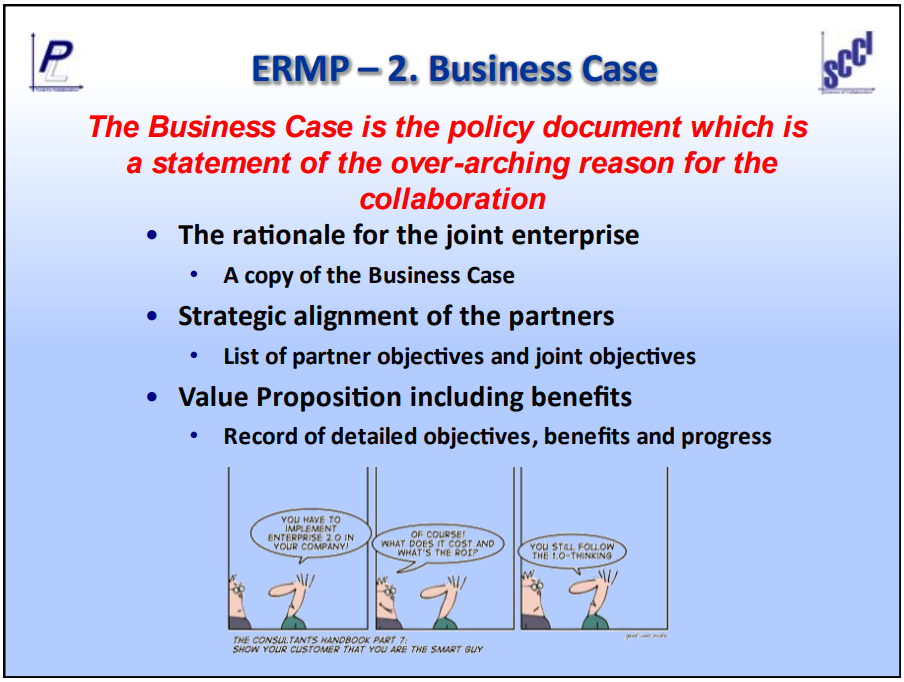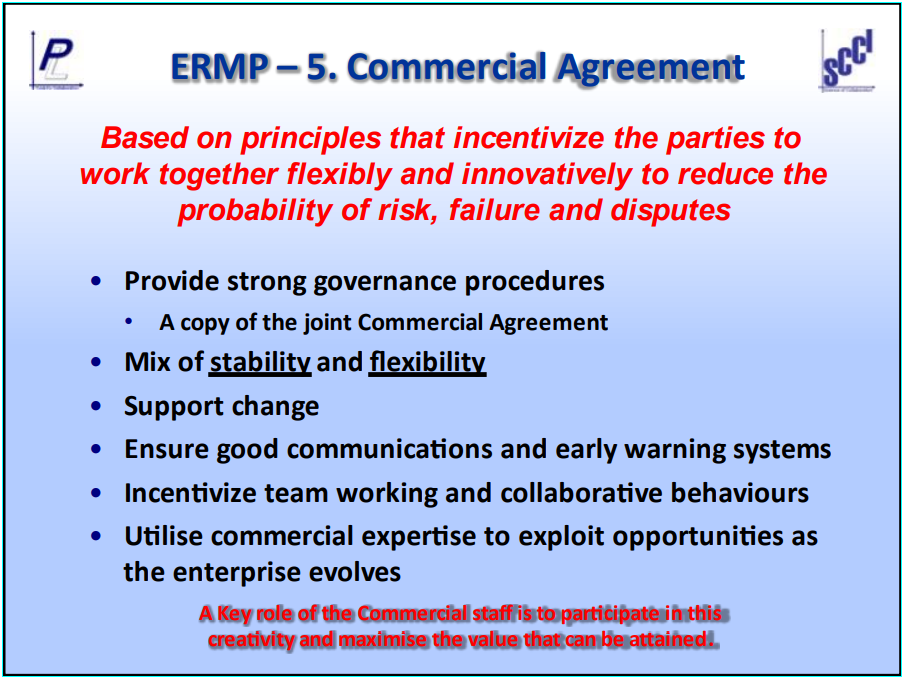Collaboration: Turning Aspirations into Reality
By Andrew Humphries & Linda McComie
Right at the start we should say where we stand on the management of collaboration. It is a complex thing that involves all aspects of organisational and inter-organisational activity. Often when organisations try to form alliances or partnerships and develop relationships they move into new territory and, they don’t understand how the basic principles of management and organisation should apply.
A robust management process makes the achievement of collaborative performance more certain. It promotes team working that brings together the many parts of the joint enterprise into an efficient ‘machine’ for delivering high value goods, services and projects. It also creates an environment in which innovation will thrive based upon trust, commitment and co-operative behaviour. We sincerely believe that if you put in place the right process then you will change behaviours and ultimately culture.
Last but not least a formal management process provides a single agreed vision for the enterprise with a unified view of the operations and performance allowing clear, unambiguous control so that the result will be greater than the sum of the parts.
We think you would agree with us that as well as lowering costs, the reasons for collaborating are many and varied and, have been known about for many years. Our research with over 200 major organisations has clearly shown that significant bottom line gains can be achieved. In fact, one organisation grew by over 30% year on year. In another case, a well-known brewer suddenly realised that collaborative relationships with their logistics partners would bring them significant competitive advantage. Previously they treated transport as a cheap commodity, they did not realise the huge impact on quality and costs of the services provided by their transport contractors.
Here is an example in the public domain of two blue chip companies who are direct competitors. You’d think they wouldn’t be able to collaborate. However, their supply chain directors had other ideas. They met by chance at a conference and immediately realised that their procedures were similar and that they could combine their freight transport operations.
They had to wage a campaign to overcome internal resistance. Indeed, one HQ manager was heard to say on spotting their competitor’s truck in their yard “Are they lost?” There was also concern about vehicle branding but they woke up to the fact that nobody knew what was being carried so it didn’t matter. They coined the slogan “We compete on the shelves not on the trucks!”
Their commercial managers were deeply involved ensuring that competition laws were not broken and that the joint freight transport operation did not interact with any other aspects of their businesses. A training programme was a key part of this. It also allowed them to bring in younger managers and give them a career uplift. You can see just how successful they are.
We have clearly identified that where effective joint management is in place significant internal benefits such as these shown above are achievable. In particular eradicating fire-fighting reduces managers workload and stress levels and leaves more time for innovation and seizing new opportunities.
One electronics organisation we worked with was able to react quickly with their partner to a market opportunity and develop an innovative new product in record time. Another, in the hospitality sector, was able to restructure its logistics function and thus facilitate the sell-off of a non-core element of its business for £3.9bn.
In our experience in 92% of organisations, collaboration is not successful and of the remainder, 5% were more by luck than judgement and only 3% were by design! These are shocking statistics. Despite the obvious advantages of collaborative working, even in the biggest companies:
- Managers are often unaware of the need to apply a discipline to collaboration as they would do for Finance, HR, Supply Chain, Marketing, Sales and so on.
- They say they are maxed out trying to keep their heads above water and therefore do not have the time to concentrate on managing relationships.
- Furthermore, many don’t take it seriously and the moment there is a budget squeeze relationship management goes down the pan.
- “We can’t talk to them - it would spoil the relationship!”
- Even though they say they want to work with a partner, the ‘Vendor Management’ culture where ‘shaking down the supplier’ still prevails.
During the 2020/21 Covid pandemic many ‘mechanised’ supply chains broke. Companies were caught out because their relationships were non-existent and they were unable to easily re-establish connections. This resulted in major, long-running disruptions.
More often than not the relationship management that exists is scattered amongst a number of individuals:
- the bosses at their annual game of golf
- the salesman who is keen to keep the customer happy so he can land the follow-on deal
- the commercial officer who manages the contract and sorts out the problems left by the salesman and, finally
- the administration, logistics and operations people who have the job of making things happen at the coal face
At the start we stated that successful collaboration depends upon having an appropriate management system. We call this Enterprise Relationship Management. Governance is primarily exercised by Relationship Managers directly reporting to their Boards. These senior managers essentially front-up their company’s external relationships and work together with their opposite numbers to secure the joint business objectives. They see this task through from the relationship cradle to grave. In our experience it is very rare to find Relationship Managers operating at the appropriate level. For instance, in a large study of several major IT sales operations the Relationship Managers were at tea-boy level!
This picture shows the organisational structure for which the Relationship Managers have over-sight. The central focus of this is the regular meetings that involve all the key people from each company who have a responsibility for providing services to the relationship. They form the joint executive operations team. They oversee the performance of the joint enterprise and constantly seek improvements and opportunities. They operate within the dynamic boundaries of the contract under the leadership of the Boards. It’s this team that really makes it happen.
Here is an example of the agenda of the joint operations team routine relationship management meeting. It shows the scope of their responsibilities. You will note apart from the day-to-day performance focus, problem-solving and continuous improvement are also vital. Finally, the continuous review of the ERMP and its major components is an essential function.
This less frequent gathering demonstrates the strategic role of enterprise relationship management and, acknowledges the potential of collaborative relationships to identify and seize new opportunities, in the wider business environment. In our earlier example about Nestle and Pladis, they discovered that their joint business model could be rolled out with other partners, and in 2016 this was valued at around £22 million per year. It’s not just all about efficiency it’s also worth hard cash.
Relationship management plans go by a number of names including Alliance Project Plan, Partnering Plan and Inter-Agency Working Protocol. We use the term Enterprise Relationship Management Plan specifically to indicate that it covers the operation of the joint enterprise where all plans, activities, decisions, changes and performance will be recorded. It is the framework or target operating model for co-ordinating all the joint business processes and activities that are essential to success. It is a lens through which the joint enterprise as a whole can be brought into focus. It allows progress to be monitored, risks and issues to be managed and opportunities to be exploited. It is available to all participants and thus forms a communication hub or dashboard. It is also a valuable resource for inducting new team members, for briefing stakeholders and provides an activity audit trail.
Incidentally you might wonder why we start out with organisational arrangements. You would be surprised that in many relationships, people don’t know who the key players are on the other side or even in their own organisation. In one extreme instance the relationship manager in one company didn’t even know that he was the Relationship Manager despite the fact that they had recently concluded a major project together.
We are now going to talk about a couple of important areas – the Business Case, Commercial Agreement and the Exit Arrangements.
The Business Case is the rationale for the relationship. It must be reviewed regularly to ensure that it meets the continuing needs of the partners and significant divergence is prevented. Changes will be reflected throughout this document and impact on the way the joint enterprise is managed. It must be supported by a system of tracking the achievement of benefits to meet the declared objectives of the joint enterprise. The work schedule will be contained in the Enterprise Business Plan.
This the foundation for the relationship and good, continuous management of the contract is paramount. This picture to all intents and purposes defines what we consider to be the key features of framework contracting which are essential within enterprise relationship management. Having examined many public and private sector relationships, unfortunately, in many the commercial staff were either relegated to the back office or refused to participate on the grounds that they did not wish to prejudice their contractual position. However, it is clear that in the few examples of collaboration that we consider to be successful, the full participation of the commercial staff was the defining factor.
The second area we wish to highlight is the Exit arrangements. We are focusing on this phase because so often it is ignored and the result is costly. Often when cases reach the courts, judges take the parties to task for not having proper exit arrangements in place. Counter-intuitively the way the relationship ends should be considered right at the beginning when you are choosing partners for a new enterprise. The parties need to think about the risks of unplanned relationship termination at the outset. The Exit Plan then needs to be regularly reviewed by the joint relationship team until it is needed. The ultimate aim should be a tidy exit that maintains good relationships with all parties.
Here's a horror story:
Headline: "Concert, a USD $10 billion joint venture of AT&T Corp. and British Telecom is calling it quits".
After only 2years in 2001 the arrangement was wound-up after losing about $800 million annually. The two companies wrote off $7 billion:
- AT&T taking the brunt of the damage, wrote off $5.3 billion.
- BT lost $1.7 billion and under the breakup agreement
- 2,300 of Concert’s 6,300 employees lost their jobs with T paying $350m in redundancy costs
The CEOs stated they deliberately did not address exit strategies, and we quote “because this cannot fail”. But it did fail and it took years to untangle the resultant mess. The bigger they are the harder they fall.
Finally, we pose some thought-provoking questions which expose the key issues of relationship management within any organisation.
Our book, published in June 2022 explains the principles of collaborative working and provides the practical tools to successfully establish and operate a joint enterprise.
It identifies relationship management as a pivotal management function in the form of a comprehensive, flexible, end-to-end management process that can be easily incorporated into an existing management structure.
Moreover, it describes the crucial role of the relationship manager who is at the heart of the system and provides the drive to achieve high performance.
Any company can tailor the framework to their needs – whether they are an SME, or a multi-national organisation, selecting a new partner, or managing existing relationships. The book has been specifically designed for both users and trainers.
Further Reading:
For further information contact:
Telephone: +44 1 908 561892
Email: sales@sccindex.com
Website: https://sccindex.com
- Implementing and Managing Collaborative Relationships – A Practical Guide for Managers Routledge 2022, ISBN 978-1-0321-1738-6, 155 pages
- Enterprise Relationship Management A Paradigm for Alliance Success Gower 2015, ISBN: 978-1-4724-2908-7, 234 pages
First Edition 2022
First published in Great Britain in July 2022 by Humphries and McComie.
Copyright Andrew Humphries and Linda McComie
The right of Andrew Humphries and Linda McComie to be identified as the authors of this work has been asserted by them in accordance with the Copyright, Designs and Patents Act 1988.
Every possible effort has been made to ensure that the information contained in this publication is accurate at the time of going to press and the authors cannot accept responsibility for any errors or omission, however caused. No responsibility for loss or damaged occasioned to any person acting, or refraining from action, as a result of the material in this publication can be accepted by the editors, publishers or any of the authors.
All rights reserved. No part of this publication may be reproduced, stored in a retrieval system, or transmitted in any form or by any means, electronic, mechanical, photocopy, recording or otherwise, without prior written permission of the copyright owner. Nor can it be circulated in any form of binding or cover other than that in which it is published and without similar condition including this condition being imposed on a subsequent purchaser.
Published by
SCCI Ltd
2 Whittle Court,
Knowlhill,
Milton Keynes,
MK5 8FT
England
Would you like to contribute an article towards our Professional Knowledge Bank? Find out more.
